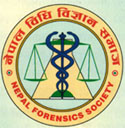NEPAL FORENSIC SOCIETY
Registered under the Nepal Law, Reg.No.622/053-54
|
|
JUSTICE BY FORENSIC SCIENCE
|
Source: www.forensic-access.co.ukForensic Drug Analysis -"Drugs aren't always what they're cracked up to be"Article taken from Issue 1 of the Forensic Access Newsletter "Benchmark" A significant part of the Forensic Access caseload concerns cases involving drugs of abuse. These range from checking that a certain drug found in someone's possession is what it is supposed to be and in the quantity alleged, through questions of purity or in the case of cannabis plants - yield, and which has a direct bearing on saleability and therefore fitness for supply, to issues of contamination and whether or not these might affect the significance of what has been found. An example of mistaken identity concerned a school boy in whose possession was found a white tablet. He said it was a decongestant he had bought over the counter at the chemists, but scientists at a highly reputable laboratory said it contained Ecstasy. The appropriate charge was brought. When the case was investigated by Forensic Access, we discovered that the analytical work was sub-standard and we confirmed that the tablet in question was actually the sort of thing one would take for a cold. It contained nothing in the way of any controlled substance. The charge was eventually dropped but not without a lot of unnecessary grief. Supply charges depend critically on the quantity and quality of the drug found. In one typical case involving herbal cannabis which we investigated, the charge related to possession of about a kilo of the stuff which it was alleged was intended for supply, and likely to command a price of at least £3,000. A detailed examination of the material showed that the cannabis was mainly leaf with little or no evidence of flowering tops - where the vast majority of the active ingredients of cannabis reside. It was therefore debatable whether the material had any realistic sale value at all. This was accepted by the prosecution's scientist and the charge of supply, dropped. A similar problem arises with the cultivation of cannabis, i.e. whether a charge of possession alone is appropriate, or whether the quantity and quality of the harvested material is such that one of supply should be brought. In several cases we have argued successfully that a combination of the number of plants which might be grown successfully to maturity, and the quality of them fits better with cultivation for personal use rather than supply to others. As to contamination, we are dealing with an increasing number of cases involving banknotes contaminated with drugs of one sort of another. Here the emphasis is on whether the drug has been satisfactorily identified - often they are present in only trace amounts, whether any opportunity exists for those investigating the matter to have accidentally contaminated notes in the process, and what the findings mean against the limitations of our knowledge about general levels of contamination of banknotes in the population at large, and in specific towns and cities in particular. In one particular case, a large quantity of banknotes (in excess of £200,000) was seized from a passenger at Heathrow Airport. The notes were examined for the presence of controlled drugs and many of them found to bear traces of cocaine - in some cases at high levels. Banks in Africa had provided the notes. With our expert help it was successfully argued in court that there were various possible ways by which the money could have become contaminated whilst in circulation and before coming into the possession of the passenger. The court ruled that on the balance of probability the money was unconnected with drugs dealing. Source: Internet
|
|
|

